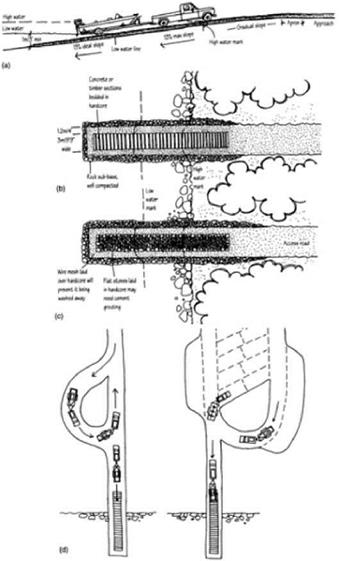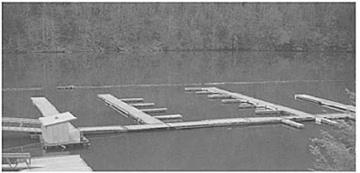At many sites with water access, people want to be able to launch boats. These may range from small kayaks and canoes that can be easily carried from a car roof rack to the water, to larger sailing or motorboats, which need ramps into the water to launch them. In remoter locations it might be appropriate to allow only those craft that can be manhandled, while in the busier areas nearer cities boat launch areas, mooring jetties or even fully fledged marina facilities with refuelling places might be provided. This is partly to reduce the degree of development, the number of artefacts and the use of motorboats in wilder places. The use of materials
 |
Boat launching-ramp designs: (a) The basic requirements of gradients and water depths for a functional and safe boat-launching ramp. (b) A ramp layout using prefabricated concrete or timber slabs bedded into
hardcore laid on a compacted rock sub-base. (c) A ramp constructed from flat stones laid in hardcore retained by an edge of larger stones, which are embedded in the base. (d) The layout of the road to and from the ramp allows the towing vehicle to turn to reverse down it and then to park, after launching the boat, in a pull-through parking area nearby.
 |
A small marina made from floating
prefabricated sections, which are linked together and connected by a hinged ramp to a floating fuel store and then to the shore. The whole system is flexible, and allows for changes in water level and swell on the water surface. A reservoir near Portland, Oregon, USA.
should also reflect the environment. However, good, simple, well-constructed facilities are needed for durability, appearance and safety. When planning for boat use, the launching ramp or jetty should be chosen for the landscape setting as well as the type of boats, site requirements and safety.



